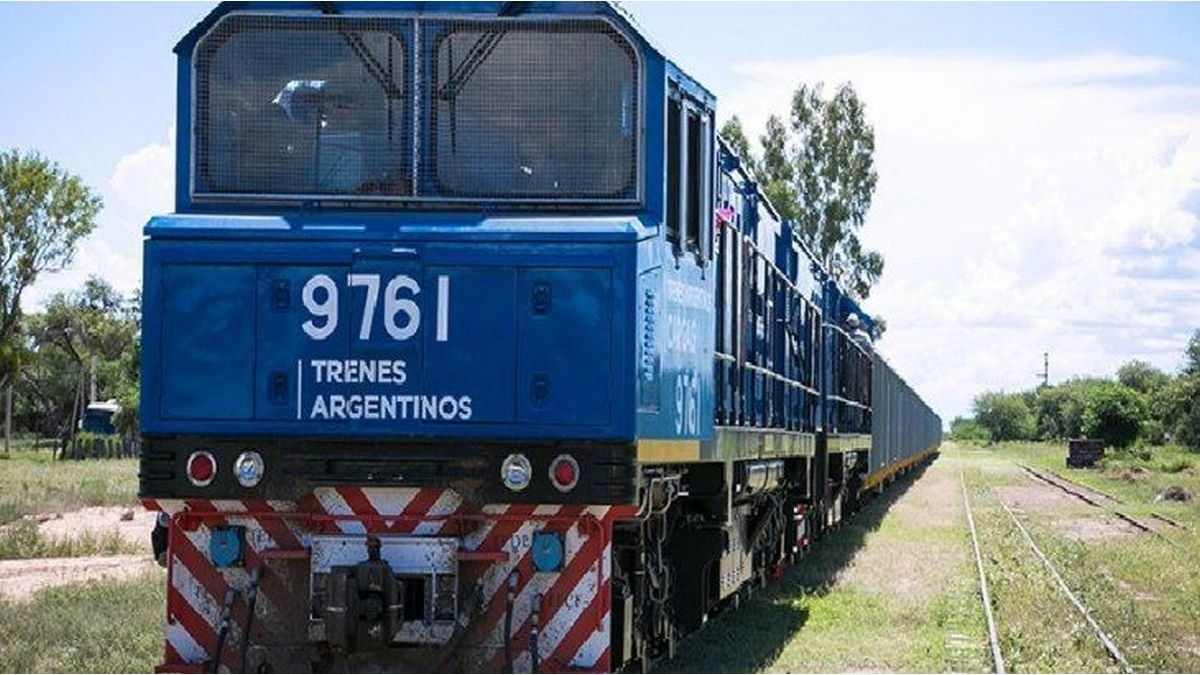It was clarified that the option, in response to the Government’s privatization announcement, aims to manage the infrastructure of the branch to reduce freight costs for transporting products. “The provinces are not going to provide the money for locomotives and wagons,” they clarified in Salta.
He announcement by the governors of Salta, Gustavo Sáenz, and of Catamarca, Raúl Jalilanticipated by Ámbito, to ensure that the railway Belgrano Cargas y Logística Sociedad Anónimaafter the Government announced its privatization, began to receive support. While there are already contacts between technical teams of various leaders, the Railway Union He winked at the initiative of the Pink Houselike a Peronist national senator.
The content you want to access is exclusive to subscribers.
The provincial leaders have every reason to negotiate that the Belgrano Loads It will be managed by an entity that would be made up of a representative from each province. They would bet on his profile of “dialogues” with the president Javier Milei so that the pass is free of cost. In recent years, with state administration, Salta reached a contribution of 40% of the load to that branch and 80% of cereal production, making this route central for its products derived from mining, soybeans, tobacco and the sugar industry. In the case of Catamarca, it also plays a central role in mining activity to bring production to the ports of Santa Fe.


Tucumán also sends part of its products to the ports. production of sugar, soybeans and the first shipments of lemons began to be made. And in the case of San Juan, freight transportation by train grew with an average of 50,000 tons per month, mainly serving non-metallic mining and the wine industry. According to official data, the Belgrano line transports 36% of the total cargo of Argentine Trains Loads (TAC) Already in December 2023 it had operations for more than 1,800,000 tons, which represents 57% more than what was produced for the same period in 2019.
According to information from Ministry of Transportation released in October 2023, agricultural products – such as soybeans, corn and sunflowers – are the most transported by trains, which represented 56% of the total cargo, but aggregate loads – such as clinker, coal, stone, sand and lime – with more than 84% and consumer products – wine, water, juices, cement, cellulose pulp – by 200%, if compared to 2019. Consumer products are of origin Santiago del Estero, Jujuy, Salta, Chaco, Misiones, Tucumán, San Luis and Mendoza.
Sáenz seeks to seduce his peers from Norte Grande
He Minister of Production and Sustainable Development of Salta, Martín De los Ríosreported this last Monday, in an interview, that Sáenz is “trying to convince his peers from the Norte Grande” to jointly manage and operate the freight train. “The idea is not that the provinces are going to make investments in infrastructure and put money for the locomotive and the wagons. What the governors propose is to have the provinces the power over the railway infrastructure and from that, we will be the ones to organize the best operation of the train,” the official explained.
One of the main objectives of Sáenz and Jalil is to lower freight costs to ensure that products for immediate consumption and for export have competitive values, in relation to truck costs. A single locomotive is capable of transporting wagons whose load is equivalent to that of 50 trucks and consumes 3.5 times less fuel. In sections greater than 600 kilometers, the cost of the train is 50% lower than that of the truck.
The proposal of the provinces is that the power of the concession remains in the hands of the provincial governments and they are the ones who define how and to whom the service is outsourced. The minister Of The Rivers He acknowledged that the government is already in contact with the technical managers of the Nation, on whom the privatization process of Belgrano Cargas depends. They take it for granted that the model to be applied will involve producers paying tolls to access rail transportation and since the provincial administrations have interference, the costs would be competitive, in relation to what is paid to send productions in trucks.
Supports
One of the first supports that the announcement of the privatization of Belgrano Cargas obtained was that of the once powerful Railway Union (UF)which issued a statement that was shared by the secretary general, Sergio Sasia. The UF points out that privatization has already been enabled by mega DNU 70/2023 and the Bases Law. “It was never rejected and was approved by the National Congress, through representatives chosen by popular will. It is the institutions of democracy that opened the door to this process and not that of a union organization,” they argued in the text.
Embed – https://publish.twitter.com/oembed?url=https://twitter.com/uf_oficial/status/1849955825663504553&partner=&hide_thread=false
PRESS RELEASE
TO PROVIDE SUSTAINABILITY TO THE RAILWAY SYSTEM, THE LARGE COUNTRIES OF THE WORLD ASSUME AN ADEQUATE COMPLEMENTARIZATION BETWEEN PUBLIC AND PRIVATE PARTICIPATION, WITHIN THE FRAMEWORK OF A STRATEGIC PLAN. pic.twitter.com/vinwzztHYq
— Railway Union (@uf_oficial) October 25, 2024
Also added in these last hours in Salta, the approval of the national senator Nora Giménez, from Unión por la Patriacritical of Sáenz’s management, who noted: “I support the proposal made by the Governor so that the concession of this service be transferred to the provinces. In the specific case of Salta, there is already a long experience in railway management through the tourist services provided with the Train to the Clouds; and I believe that this experience can be scaled. Furthermore, I trust the ability of the provinces to partner with private investors, for example in the mining or grain production sector. , for the provision of different services”.
Source: Ambito
I am a 24-year-old writer and journalist who has been working in the news industry for the past two years. I write primarily about market news, so if you’re looking for insights into what’s going on in the stock market or economic indicators, you’ve come to the right place. I also dabble in writing articles on lifestyle trends and pop culture news.




